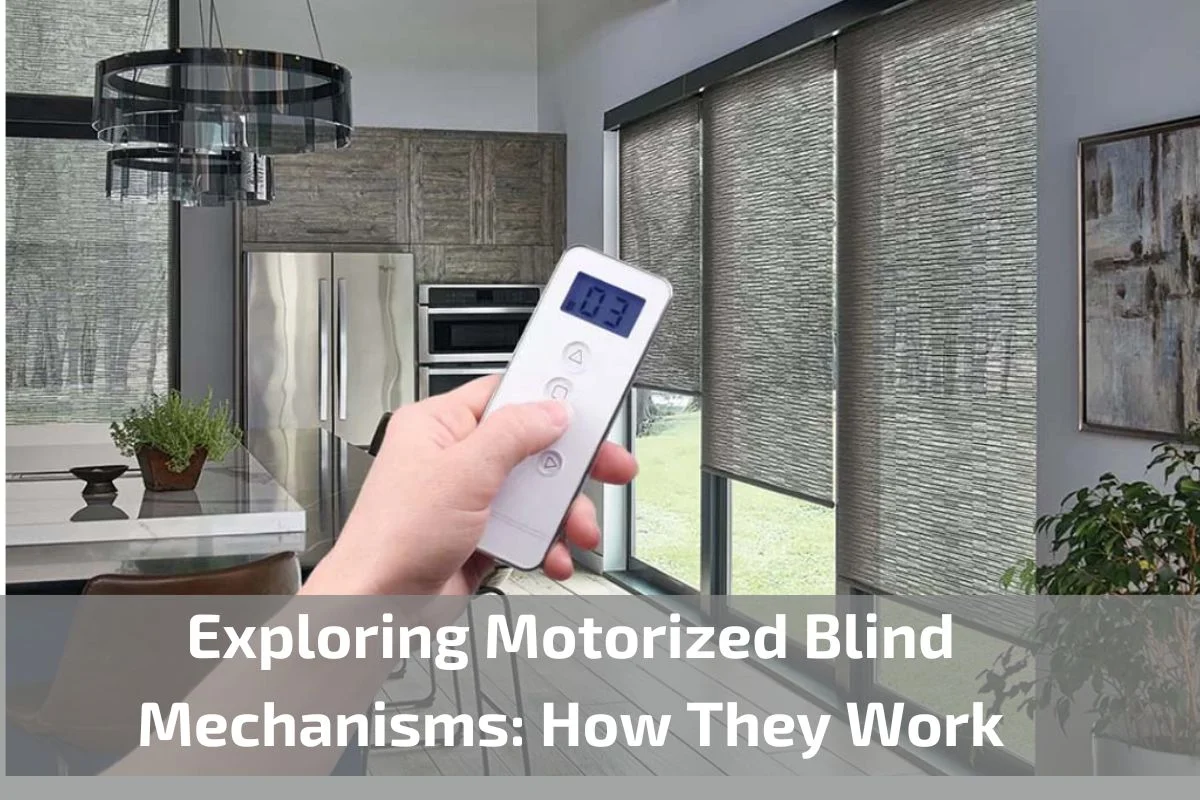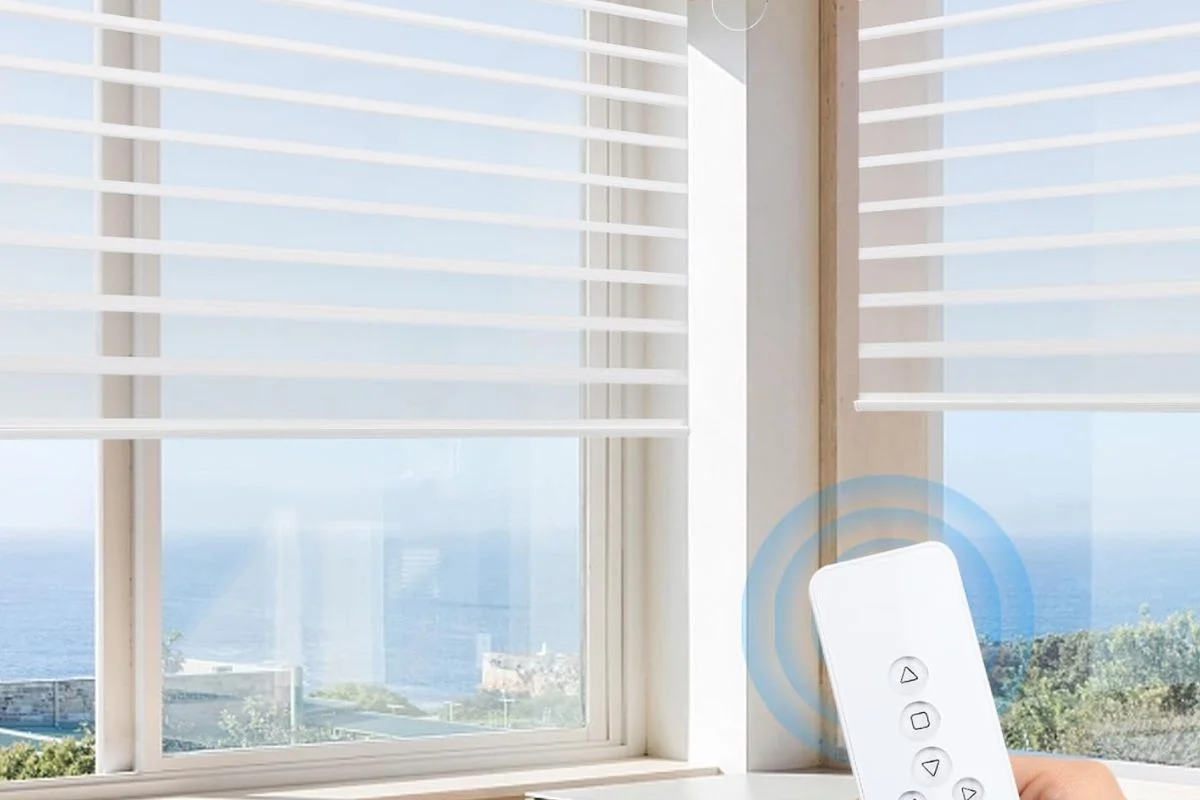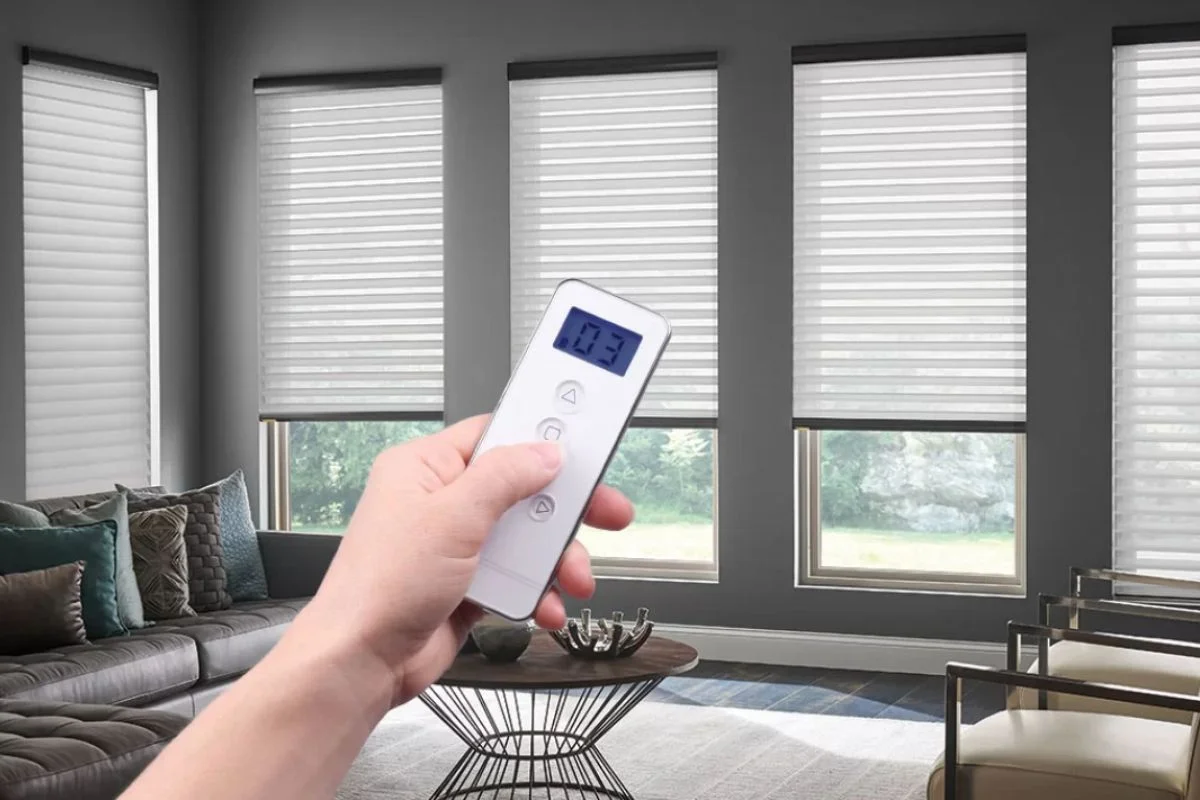
Motorized blinds have revolutionized the way we control light, privacy, and ambiance in our homes. These innovative window treatments offer convenience, efficiency, and a touch of luxury by allowing you to adjust them with the push of a button or even through smart home automation systems. But how exactly do motorized blind mechanisms work?
In this article, we will explore the fascinating world of motorized blind mechanisms and delve into how they operate. From the components that make up the system to the technology behind their movement, understanding how motorized blinds work can provide insight into their functionality and potential benefits for your home. Whether you’re considering upgrading to motorized blinds or simply curious about their inner workings, join us as we uncover the mechanics behind these modern window treatments.
What Are Motorized Blinds
Motorized blinds are innovative window treatments equipped with a motorized mechanism that allows for automated operation. Unlike traditional blinds that require manual adjustment using cords or chains, motorized blinds can be opened, closed, or tilted with the push of a button, remote control, or through smart home automation systems.
These blinds feature a motorized system installed within the headrail or casing, which enables smooth and precise movement of the blind slats or fabric panels. The motor is typically powered by batteries or connected to a power source, depending on the specific model and installation requirements.
Motorized blinds come in various styles and configurations, including vertical blinds, horizontal blinds, roller blinds, and cellular shades, among others. They are available in a wide range of materials, colors, and designs to complement any interior decor style and meet different functional needs.
The primary components of motorized blinds include:
- Motor: The motor serves as the driving force behind the automated operation of the blinds. It is responsible for moving the blind slats or fabric panels in response to user commands.
- Control System: Motorized blinds can be controlled using a variety of methods, including handheld remotes, wall-mounted switches, smartphone apps, or voice commands through compatible smart home assistants like Amazon Alexa or Google Assistant.
- Power Source: Motorized blinds are powered either by batteries, which are housed within the headrail or casing, or by a direct connection to a power outlet. Battery-powered blinds offer flexibility in installation and are ideal for locations where wiring may be challenging.
- Mechanism: The mechanism of motorized blinds includes the internal components responsible for transmitting power from the motor to the blind slats or fabric panels. This mechanism ensures smooth and quiet operation of the blinds.
How Do Motorized Blinds Work
Motorized blinds operate through a sophisticated system that allows for automated control of the blind’s movement, providing convenience and functionality to users. Here’s how motorized blinds work:
Motorized Mechanism: At the heart of motorized blinds is a motorized mechanism that drives the movement of the blind slats or fabric panels. This mechanism is typically housed within the headrail or casing of the blinds and is responsible for opening, closing, or tilting the blinds as desired.
Control Signals: Motorized blinds can be controlled using various methods, including handheld remotes, wall-mounted switches, smartphone apps, or voice commands through smart home assistants. These control signals are transmitted wirelessly to the motorized mechanism, instructing it to perform specific actions such as raising, lowering, or adjusting the blinds.
Power Source: Motorized blinds are powered either by batteries or by a direct connection to a power outlet. Battery-powered blinds utilize rechargeable or disposable batteries housed within the headrail or casing, providing flexibility in installation and eliminating the need for wiring. Alternatively, some motorized blinds can be hardwired to a power source for continuous operation without the need for battery replacement.
Internal Components: Within the motorized mechanism, various internal components work together to translate control signals into physical movements of the blinds. These components include gears, pulleys, and sensors that ensure smooth and precise operation of the blinds.
Programming and Automation: Many motorized blinds feature advanced programming and automation capabilities, allowing users to schedule specific times for the blinds to open or close automatically. This functionality is particularly useful for enhancing energy efficiency, maximizing natural light, and providing privacy at desired times of the day.
Safety Features: Modern motorized blinds often incorporate safety features to prevent accidents and ensure user safety. These may include obstacle detection sensors that stop the blinds from closing if they encounter an obstruction, as well as child-safe cordless designs that eliminate the risk of entanglement.
Types of Motorized Blind Systems
Motorized blind systems come in various configurations and designs to suit different window sizes, styles, and functional requirements. Here are some common types of motorized blind systems:
Roller Blinds: Motorized roller blinds feature a fabric panel that rolls up and down around a cylindrical tube at the top of the window. The motorized mechanism is typically installed within the tube, allowing for smooth and quiet operation. Roller blinds are versatile and can be customized with various fabric options to control light filtration and privacy levels.
Roman Blinds: Motorized Roman blinds combine the elegance of traditional Roman shades with the convenience of motorized operation. These blinds feature fabric panels that fold or stack neatly when raised and lower smoothly when lowered. Motorized Roman blinds are ideal for adding a touch of sophistication to any room while providing customizable light control and privacy options.
Venetian Blinds: Motorized Venetian blinds consist of horizontal slats that tilt to control light and privacy levels. The motorized mechanism allows for precise adjustment of the slats’ angle, providing flexibility in managing natural light and interior ambiance. Venetian blinds are available in a variety of materials, including aluminum, wood, and faux wood, to complement different decor styles.
Vertical Blinds: Motorized vertical blinds feature vertical slats that traverse along a track at the top of the window. The motorized mechanism allows for smooth and quiet operation, enabling users to open, close, or tilt the slats with ease. Vertical blinds are a popular choice for large windows, sliding glass doors, and commercial spaces due to their practicality and versatility.
Cellular Shades: Motorized cellular shades, also known as honeycomb blinds, feature a unique cellular design that traps air to provide insulation and energy efficiency. These blinds can be raised or lowered using a motorized mechanism, allowing users to control light filtration and temperature regulation. Cellular shades are available in a range of colors and cell sizes to suit different decor preferences and energy-saving needs.
Pleated Shades: Motorized pleated shades feature crisp, pleated fabric panels that can be raised or lowered to control light and privacy levels. The motorized mechanism allows for smooth and precise operation, making pleated shades an elegant and functional window treatment option for any room.
Benefits of Motorized Blinds
Motorized blinds offer a multitude of benefits that enhance convenience, comfort, and functionality in both residential and commercial settings. Here are some key advantages of motorized blinds:
Convenience: Motorized blinds eliminate the need for manual operation, allowing users to adjust their window treatments with the touch of a button or through automated scheduling. This convenience is especially beneficial for hard-to-reach windows or individuals with mobility issues.
Enhanced Privacy and Security: Motorized blinds enable precise control over privacy levels by allowing users to adjust the position of the blinds remotely. This feature enhances security by deterring potential intruders and protecting the privacy of occupants inside the space.
Improved Energy Efficiency: Motorized blinds contribute to improved energy efficiency by allowing users to regulate the amount of sunlight entering the room. By automatically adjusting the blinds based on the time of day or external conditions, motorized blinds help reduce solar heat gain in the summer and retain warmth in the winter, leading to energy savings on heating and cooling costs.
Customization and Versatility: Motorized blinds come in a variety of styles, materials, and configurations to suit different decor preferences and functional requirements. Whether you prefer roller blinds, Roman shades, Venetian blinds, or cellular shades, motorized options offer customizable solutions to complement any interior design scheme.
Integration with Smart Home Systems: Motorized blinds can be seamlessly integrated with smart home automation systems, allowing for centralized control and coordination with other smart devices. Users can program their blinds to adjust automatically based on predetermined schedules, sensor inputs, or voice commands, enhancing the overall smart home experience.
Child and Pet Safety: Motorized blinds eliminate the need for cords or chains, reducing the risk of entanglement and strangulation hazards, especially in homes with young children or pets. Cordless operation ensures a safer environment while maintaining the sleek and uncluttered appearance of the window treatments.
Longevity and Durability: Motorized blinds are designed with high-quality materials and components that ensure reliable performance and longevity. The motorized mechanism is engineered for smooth and quiet operation, minimizing wear and tear over time and requiring minimal maintenance.
Choosing the Right Motorized Blinds
Selecting the right motorized blinds involves considering various factors to ensure they meet your functional needs, aesthetic preferences, and budgetary constraints. Here are some key considerations to help you choose the perfect motorized blinds for your space:
Window Size and Type: Consider the size, shape, and type of windows in your space when selecting motorized blinds. Ensure that the blinds are compatible with your window dimensions and configuration, whether you have standard rectangular windows, bay windows, or specialty-shaped windows.
Light Control and Privacy: Determine your desired level of light control and privacy. Some motorized blinds offer blackout or room-darkening capabilities, ideal for bedrooms or media rooms where light control is essential. Others provide sheer or semi-opaque options for diffused light and partial privacy.
Decor Style and Material: Choose motorized blinds that complement your interior decor style and color scheme. Consider the material and finish options available, such as fabric, wood, aluminum, or synthetic materials, and select a style that harmonizes with your existing furnishings and design elements.
Motorization Features: Evaluate the motorization features and control options offered by different motorized blind systems. Look for features such as remote control operation, smartphone app compatibility, voice activation with smart home assistants, and programmable scheduling for automated adjustments throughout the day.
Power Source: Determine the preferred power source for your motorized blinds. Battery-powered blinds offer flexibility in installation and are suitable for locations where wiring may be challenging or inaccessible. Alternatively, hardwired blinds provide continuous power and eliminate the need for battery replacement but may require professional installation.
Budget and Cost Considerations: Establish a budget for your motorized blinds project and explore options within your price range. Consider the upfront costs of the blinds, installation fees, and any additional accessories or customization features you may desire. Compare prices from different manufacturers or retailers to find the best value for your investment.
Warranty and Support: Look for motorized blind systems that come with comprehensive warranties and reliable customer support. A warranty provides peace of mind and protection against manufacturing defects or malfunctions, while responsive customer support ensures prompt assistance in case of technical issues or inquiries.
Maintenance and Care for Motorized Blinds
Proper maintenance and care are essential to ensure the optimal performance and longevity of your motorized blinds. Here are some maintenance tips to help keep your motorized blinds in top condition:
Regular Cleaning: Dust and debris can accumulate on the surface of motorized blinds, affecting their appearance and functionality. Use a soft brush attachment on a vacuum cleaner or a microfiber cloth to gently remove dust and dirt from the blinds’ surface regularly. For stubborn stains or spots, dampen the cloth with mild detergent and water solution, then gently wipe the affected area.
Avoid Harsh Cleaning Agents: Avoid using harsh chemical cleaners, abrasive materials, or solvents on motorized blinds, as they can damage the fabric, finish, or motorized components. Stick to mild cleaning solutions and non-abrasive cleaning tools to prevent any damage or discoloration.
Inspect and Lubricate Moving Parts: Periodically inspect the moving parts of your motorized blinds, including the motor, tracks, and mechanisms, for signs of wear, debris buildup, or obstruction. Lubricate the moving parts with a silicone-based lubricant to ensure smooth and quiet operation. Be sure to follow the manufacturer’s recommendations for lubrication intervals and product compatibility.
Check Batteries and Power Supply: If your motorized blinds are battery-powered, check the batteries regularly to ensure they are properly charged and functioning. Replace the batteries as needed to prevent interruptions in operation. If your blinds are hardwired, periodically inspect the power supply and wiring for any signs of damage or wear, and address any issues promptly.
Keep Remote Controls and Wall Switches Clean: Clean the surfaces of remote controls and wall switches regularly to remove dirt, oils, and debris that can accumulate over time. Use a soft, dry cloth or a mild cleaning solution to wipe down the controls gently. Avoid getting moisture inside the controls, as it can damage the electronic components.
Schedule Professional Maintenance: Consider scheduling professional maintenance services for your motorized blinds on a periodic basis. Professional technicians can inspect the blinds, perform routine maintenance tasks, and address any issues or repairs that may arise. Regular servicing can help prevent potential problems and ensure the continued functionality and reliability of your motorized blinds.
Conclusion
Motorized blinds offer a blend of convenience, functionality, and style that can transform any space into a more comfortable and efficient environment. With their automated operation, customizable features, and sleek design, motorized blinds have become a popular choice for homeowners and businesses alike.


